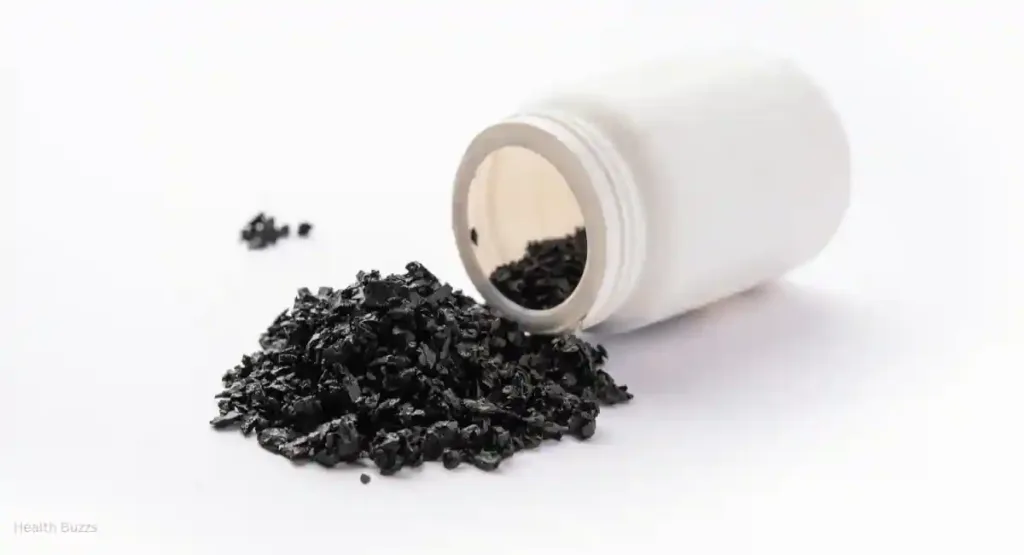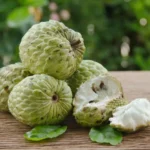Introduction-
Benefit of Shilajit for health are numerous and have been recognized by traditional medicine for centuries. Did you know that the Himalayan mountains are home to a natural substance called Shilajit? and known for its therapeutic properties. It is a black, tar-like resin formed from the decomposition of plant matter over centuries. Shilajit is rich in minerals, trace elements, and amino acids and is known to have a variety of health benefits. In this article, we will explore some of the benefit of Shilajit for health and how it can help improve your overall well-being.
What is Shilajit?
Shilajit is a sticky, tar-like substance found in the mountains of Asia, typically in the Himalayas, the Altai, the Caucasus, and other mountain ranges. This enigmatic compound forms from decomposing plant and microbial matter over centuries, resulting in a dense mineral pitch. Known by various names — mumie, salajeet, or shilajatu — shilajit’s reputation precedes it, celebrated in ancient Siddha medicine and other historical practices for at least a millennium.
The Wealth Within Shilajit
Shilajit’s mineral composition is vast and impressive, boasting over 80 different minerals in their ionic form, including fulvic acid, which enhances the body’s capacity to absorb these minerals. Additionally, shilajit contains compounds such as dibenzo-alpha-pyrones, humic acid, and fulvic acid — all with purported health-promoting properties.

Top 9 Health Benefit Of Shilajit
The potential benefit of shilajit for health are as diverse as the compounds it contains. Here’s a deeper look into some of the most lauded features of this ancient substance.
1. Boosts Energy and Stamina
Shilajit is often associated with increased energy levels and is a popular choice for those seeking a natural boost. It suggests that the high fulvic acid content helps produce adenosine triphosphate (ATP), the body’s energy currency.
2. Enhances Cognitive Function
In Ayurvedic medicine, shilajit is considered rejuvenating, particularly for the brain. It may aid cognitive processes, including memory and learning, by reducing inflammation and acting as an antioxidant.
3. Supports Immune System
The minerals and antioxidants found in shilajit may help to fortify the body’s natural immune defenses. While scientific evidence is still emerging, traditional use points to shilajit’s role in supporting overall immune health.
4. Improves Sexual Health
Shilajit is often used to enhance male fertility and libido. Studies indicate that it may improve testosterone levels, sperm count, and sperm motility while maintaining reproductive organ health.
5. Promotes Anti-Aging
According to experts, shilajit’s antioxidant qualities are a significant factor in delaying the ageing process. By combating free radicals, it may reduce the oxidative stress that contributes to aging at the cellular level.
6. Joint and Muscle Support
Shilajit is widely used to support joint and muscle health. It contains anti-inflammatory properties, can support the reduction of joint discomfort, muscular soreness, and inflammation brought on by arthritis.It also helps promote cartilage repair and tissue regeneration, which benefits athletes and individuals engaged in physical activities.
7. Respiratory Support
Shilajit has soothing effects on the respiratory system. It helps clear congestion and phlegm, benefiting individuals with respiratory conditions like asthma, bronchitis, and cough. It promotes healthy lung function and bronchial dilation, improving overall respiratory health.
8. Aids in Detoxification
Fulvic acid found in shilajit is a recognized chelator. It may bind to and remove heavy metals and toxins from the body, aiding its natural detox pathways.
9. Digestive Support
Shilajit supports the digestive system by promoting proper digestion and absorption of nutrients. It stimulates the production of digestive enzymes, detoxifies, and helps healthy gut flora. Shilajit also acts as a natural laxative, promoting regular bowel movements and reducing constipation.
How to Take Shilajit
Shilajit comes in different forms, each with its method of consumption and recommended dosage. It is essential to learn the correct way to incorporate it into your routine to maximize its benefits while ensuring your health and safety.
Methods of Consumption
- Powder: Mix this form with water or take it sublingually for quick absorption.
- Capsules: Capsules are an excellent option for people who are always on the move as they provide a precisely measured shilajit dosage.
- Resin: People often dissolve the resin, which is usually available in its purest form, in warm water and consume it. Mix it with honey or milk for a more palatable experience.
Dosage Recommendations
Shilajit dosages can vary based on the individual’s health status and the specific product. However, standard advice is to start with a small dose and gradually increase to the desired level. As a general guideline:
- Powder and Capsules: A typical dose might range from 100mg to 300mg per day, taken once or twice daily.
- Resin: A pea-sized amount (approximately 300-500mg) is a typical starting dose, which can adjusted over time.
Consult a healthcare expert before beginning a new supplement regimen, especially if you have chronic health problems or are on medication.
Safety Considerations
People generally regard shilajit as safe, but some potential adverse effects include moderate digestive difficulties or an increase in body temperature. Sticking to the appropriate dosage and watching for any side effects is essential. For safety, always purchase shilajit from reputable sources that offer high-quality products.
What are the uses of shilajit?
Shilajit Uses in Different Contexts
The versatility of shilajit extends beyond just being a dietary supplement. People employ it in a variety of contexts for its potential health benefits.
– Ayurvedic Medicine
Shilajit is a cornerstone of Ayurvedic medicine, used as a tonic and as part of various formulas to balance the doshas, enhance vitality, and promote longevity.
– Sports Performance and Recovery
Athletes and those who are active may turn to shilajit to aid performance and post-exercise recovery. Its nutrient profile can support muscle health and energy metabolism, potentially improving endurance and reducing recovery time.
– Skin and Hair Care
People believe applying shilajit benefits the skin and hair, offering nourishment, anti-inflammatory effects, and possible hair growth stimulation.
– General Wellbeing
Many individuals integrate shilajit as part of their daily wellness regimen, attesting to its ability to promote overall vitality and wellbeing.
Also Read- 10 Tips to Cure Cold Fast
Ayurvedic Properties of Shilajit:
Shilajit, also known as “mineral pitch” or “medicinal asphalt,” is a herbal substance in the Himalayas. It has been used in Ayurvedic medicine for centuries due to its numerous beneficial properties. Ayurveda considers Shilajit as a potent adaptogen that supports overall health and well-being.
- Rasa (Taste): Bitter, Pungent, and Astringent
- Anu Rasa (After taste): Astringent
- Guna (Main quality): Dry and Light
- Virya (Potency): Hot
- Vipaka (Resultant): Pungent
- Prabhava (Therapeutic effect): Rejuvenation
- Dosha Karma (Effect on Humor): Pacifies Kapha, Vata and detoxifies Pitta dosha
Also Read- Health Benefits of Spinach Juice for a Nutrient-Packed Lifestyle
What is the side effects of shilajit?
What is the side effects of shilajit: Shilajit, an Ayurvedic supplement known for its numerous health benefits, also has a few potential side effects that users should be aware of. Taking shilajit within the recommended dosage is generally considered safe. However, it is essential to be aware of these side effects.
– Gastrointestinal Issues
One of the most common side effects of shilajit is gastrointestinal discomfort, such as nausea, vomiting, and diarrhoea. Certain compounds in shilajit can primarily cause this side effect by irritating the digestive system. Gradually increasing the dosage is recommended to minimize the risk of gastrointestinal issues.
– Headache
Some individuals have reported headaches while using Shilajit. The cause of these headaches is not yet fully understood, possible causes include increased blood supply to the brain or changes in neurotransmitter levels. If you experience headaches after taking shilajit, A healthcare professional recommends taking a break from its usage and consulting with them.
– Fatigue
Another possible side effect of shilajit is fatigue. Following consumption of the chemical, some people may report an increase in energy, while others may experience fatigue. The stimulant-like effects of shilajit or the body’s detoxification process can cause this fatigue. If you experience excessive fatigue after taking shilajit, it is advisable to reduce your dosage or take a break from using it.
– Allergic Reactions
Shilajit may cause allergic reactions in individuals with specific allergies or sensitivities. Allergic reactions to shilajit may include skin rashes, hives, and swelling. Before starting any supplement to rule out allergies or potential sensitivities, consult a healthcare professional, including Shilajit.
– Interactions with Medications
Shilajit may interact with certain medications, including anticoagulants, blood pressure medications, and heart medications. Before starting any supplement, healthcare professionals should always be consulted., including shilajit, to ensure it does not interfere with current medications.
– Insomnia
Shilajit may interfere with sleep patterns and cause insomnia.Some people may have difficulties falling asleep, while others may wake up frequently at night. If you are experiencing insomnia after taking shilajit, Adjust your dosage or take it earlier in the day to prevent sleep disruptions.
– Diuretic Effect
Shilajit can act as a diuretic, causing increased urination. This side effect is relatively minor and typically resolves within a few days or weeks of taking the supplement. However, diuretics and blood pressure-lowering drugs should be aware of this possible interaction.
Safety Precautions
We recommend following these guidelines to ensure the safe use of shilajit.
1. Follow the recommended dosage. Excessive intake of shilajit may result in side effects.
2. Before beginning Shilajit, speak with a medical professional, especially if you have any medical conditions or are taking medications.
3. Begin with a low dose and gradually boost it over time to reduce the possibility of adverse effects.
4. Stop taking shilajit if you experience any severe or persistent side effects.
5. Store shilajit in a cool, dry place away from direct sunlight.
Also Read- Ashwagandha Benefits for Female
Are there different types of shilajit
Different Types of Shilajit
Shilajit is available in various forms, each with its composition and properties. Some of the common types of shilajit include:
1. Black Shilajit: People believe this type is typically darker and has a higher mineral content, giving it more robust rejuvenating properties.
2. Yellow Shilajit: This type is typically lighter in colour and is known for its anti-inflammatory properties.
3. Red Shilajit: Experts believe this type supports immune function due to its higher concentration of antioxidants.
4. White Shilajit: Its higher concentration of fulvic acid is known to support cellular function.
These different types of shilajit can vary in composition, efficacy, and potential side effects. It is important to note that the quality and purity of shilajit can differ significantly, so picking a reliable brand with premium ingredients is crucial.
Hi there! I’m content writer and blogger. With over two years of experience, I’ve shared my passion for writing across various platforms. I firmly believe in the transformative power of words and look forward to sharing this journey with you. Enjoy my work!










